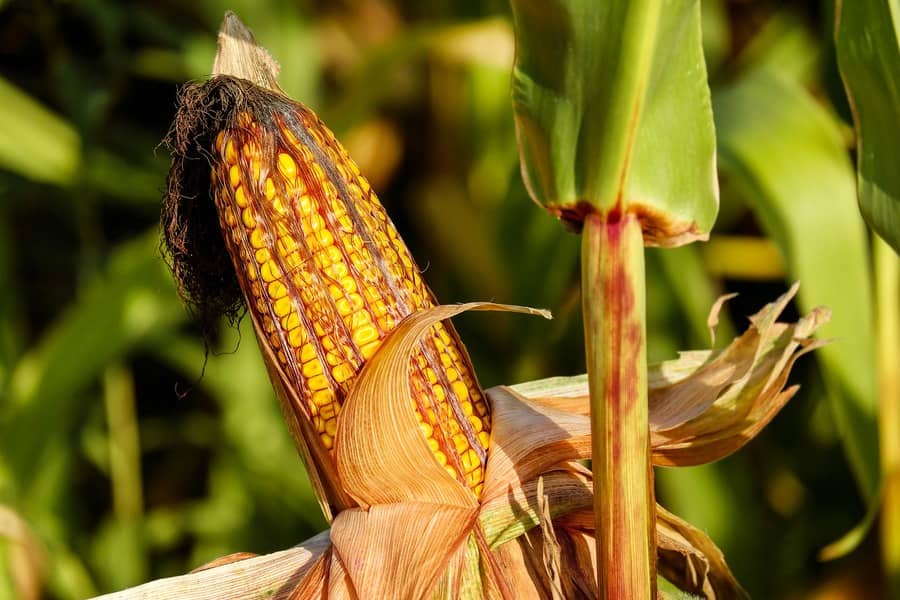Porto Alegre, January 30, 2023 – The corn market closes January still under the effects of regional selling pressure, even in Rio Grande do Sul, a state that copes with production losses and the agribusiness media making an effort to show unrealistic levels of production. Growers seem to ignore the corn supply scenario until the second crop harvest and choose to hold soybeans, which has a fully bearish bias. Thus, for the time being, losses in Rio Grande do Sul, the record internal consumption, the record exports in 2022, and the lowest stocks since 2016 are not being considered by growers at the time of trading.
The harvest of Brazil’s 2023 crop is moving forward in Rio Grande do Sul and isolated locations in São Paulo. The harvest is starting in Santa Catarina, but must take a little longer in Paraná. Goiás and Minas Gerais are regions with later harvests and, therefore, will have a larger supply from April.
The production update carried out by Safras & Mercado in January brought production cuts to Rio Grande do Sul. In January, the rains occurred more in the center-north of the state and were scarcer in the other regions. In this way, the productivity of the crops reaped so far has varied greatly. Losses in the northwest of the state follow the profile of eastern Argentina, with sharp losses in the earliest corn. Good rains at the beginning, but lack of pollination. The cut must range from 5.8 to 4.6 mln tons, remembering that the initial number was 6.3 mln tons. For the time being, this is what we consider for the local crop, and we will have further adjustments as the harvest progresses in February.
In the other regions, there must be small area adjustments but with the surprise of a smaller area in São Paulo. More soybeans and strong concern over leafhoppers lowered the summer corn area. The difficulty in controlling leafhoppers may also limit some regional corn areas of the second crop in the state. The production potential in the Center-South for the summer is falling to 23.7 mln tons, with compensation from excellent yields in Santa Catarina, Paraná, and the Southeast region.
The 2023 second crop has not encouraged growers. Despite the lower price of urea, some variables are still limiting decisions in part of growing regions. Very low prices indicated for the second crop, such as BRL 55 in Mato Grosso, BRL 65 in Goiás, and BRL 65/70 in Matopiba, do not stimulate growers to boost technology and get new areas. The seed industry continues to bet on a 6% increase in the area of the 2023 second crop. Safras & Mercado, so far, has detected a 1% growth in this second crop. The flow of inputs is still occurring regionally and can still be decisive mainly in Matopiba. The 2023 second crop is projected with a record potential of 87.7 mln tons.
Total Brazilian production is now indicated at 125.3 mln tons, a new record, of course, if the second-crop weather progresses in good conditions. So far, the initial delay in the soybean harvest does not interfere with this production projection for the Brazilian second crop.
While the harvest is taking shape, exports are confirming record numbers. January commitments stopped at 5.3 mln tons, with 4.2 mln tons already shipped. This volume of exports accumulates 47.9 mln tons in the 2022 cycle that ends this January. At this point, the carryover stocks from 2022 to 2023 fall below 4 mln tons, the lowest since 2016.
February now has a shipment queue for 1.9 mln tons. An expressive volume for a month in which ports must already be full and committed to soybeans. However, the harvests with some delay and without strong international demand keep soybeans with slow shipment in January and February. There are 2 mln tons that could be guaranteeing domestic supply in view of production losses in Rio Grande do Sul and very low carryover stocks. We must also reflect that the chicken sector housed 615 mln head in December, a record for the month and the second-highest in history. So, there is no sign of demand in the short term.
Even so, in January, prices have settled down locally. Even with the agribusiness media pointing to extraordinary losses in Rio Grande do Sul, prices dropped below BRL 90 last week. In São Paulo, a fully corn-importing state, there is pressure on prices even though the crop has not yet been reaped. At this point, we must understand that there is no shortage of corn in the Brazilian market, but instead the depletion of regional stocks. However, if growers wish to sell all their stocks and production at the same time, not worrying about the fundamental bias further ahead, the market backs off regardless of the supply picture. Pressure now to have higher prices later on? Possibly, with the definitive advance of the soybean harvest in February, these corn logistics and selling pressure could decrease intensely.
There are commercialization decisions that often surprise the Brazilian market or that reveal some logistical problems. There are still growers selling corn to free up space for soybeans. However, even with the bias of extremely low corn stocks, growers have opted to sell corn and try to store soybeans at harvest. As many trading companies are opening the option to set forward prices for soybeans, warehouses must be quickly filled up. Growers are trying to hold soybeans, which have a strong bearish bias, and trying to sell corn, which has a bullish bias for the first half of the year. Such decisions will not change the soybean price curve but they hold back corn trading.
Follow the Safras Agency on our website. Also follow us on our Instagram and Twitter and stay on top of the main agribusiness news!
Copyright 2022 – Grupo CMA

